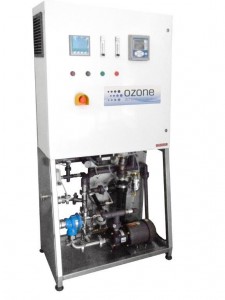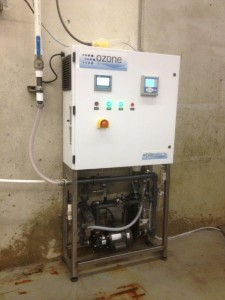
Science-based ozone system offers fish processors a variety of benefits
Food in Canada
Business Operations Food SafetyFisheries turn to ozone to significantly reduce bacteria count in facilities, improve product quality and reduce spoilage
“The benefits of using ozone are twofold,” says John Milobar, president of Albion Fisheries Ltd., Western Canada’s largest seafood distributor. “We have seen a significant reduction in the bacteria count, which is a good thing. And because there is less bacteria, we get a longer shelf life.”
Albion Fisheries, founded in 1963, was certified by the Global Aquaculture Alliance (GAA) for best aquaculture practices (BAP) earlier this year.
Shelf life is not a major concern for Prince Edward Island’s Acadian Fishermen’s Cooperative (AFC), since all of its seafood is processed then frozen. But like Albion, bacteria counts are a major concern. Many countries, including the U.S., have strict requirements or zero tolerance for certain types of bacteria.
“It’s not just the food inspectors who track bacteria counts anymore,” explains Lynn Rayner, quality manager for Acadian Fishermen’s Cooperative (AFC). “Our customers now regularly ask for

A seafood line worker uses ozone-infused water to clean and sanitize processing equipment between shifts. Employees and management have commented on how much cleaner equipment stays when using ozone.
those reports as well. Our low counts give our customers peace of mind.” Adds Jeff Malloy, AFC general manager and CEO: “I sleep better knowing we have lower bacteria counts using ozone.”
Both companies rely on Ozone International’s proprietary ozone generating and monitoring system to safely and effectively clean cutting tables, conveyors and automated processing equipment. “We use ozone in every area of the plant – crab, shrimp, salmon and bottom fish – to keep bacteria down,” says Milobar, who has been with Albion Fisheries for 20 years, and has been the president for the past six. “We also use ozone to wash down our receiving dock to lessen the ‘fishy’ smell caused by bacteria for our employees and customers.”
In addition to using ozone in fish processing, there are two major cleanings daily using ozone-infused water to clean cutting tables, conveyors, floors and automated processing equipment. ”With ozone we’ve notice improved cleanliness of our operation,” Milobar explains. “That means deterioration slows way down and our seafood stays fresh longer.”
“Ozone is always flowing somewhere in the plant, including our cooking and raw areas,” notes Rayner. “We have white conveyor belts in our facility and we have found they stayed whiter when sprayed with ozone-infused water. We also use ozone to clean our floors. They aren’t as slippery as they once were, which is safer for our employees.”
AFC is owned by approximately 95 member fishermen. At peak season it employs more than 200 workers in its processing facility and ports.
“Some of our managers were doubters at first, but now they comment on how clean the stainless steel tables are,” says Rayner, who holds a Seafood Processing Technology Diploma from Holland College in P.E.I. AFC also soaks the plastic tubs used to carry seafood in ozone-infused water to get rid of the inevitable film that results from spooning, washing and cleaning seafood.
Both Milobar and Musleh Uddin, Albion’s director of corporate Quality Assurance, were early ozone advocates. Uddin, who had worked in Japan, saw ozone’s benefits first-hand and became a supporter.
In 2012, Albion installed Ozone International’s system into its then-new facility in Richmond, B.C. Workers at the plant initially had worries about ozone because it was new and unfamiliar. “Over time they got used to working with ozone and their concerns were put to rest,” says Uddin. “Today, everyone is happy with ozone.”

The C-150E and C-300E ozone generators are the most popular models for seafood processors. All photography courtesy of Ozone International
That is due to the precise levels generated by Ozone International’s equipment. A local programmable logic controller (PLC), ozone monitors and closed-loop control provide optimum safety and efficacy. Work areas are constantly monitored to ensure precise ozone concentrations. Equally important is Ozone International’s North American network of service technicians that are available to monitor the equipment either on site or remotely.
Like the majority of North American seafood processors, Albion Fisheries Ltd. and Acadian Fishermen’s Cooperative use ozone in a variety of applications to improve product quality and reduce spoilage for a positive impact on their bottom line.
For more information contact Mark Leader, Ozone International, at (206) 780-5552 ex. 215, or at mleader@o3international.com. Visit Ozone International at www.o3international.com
Print this page
